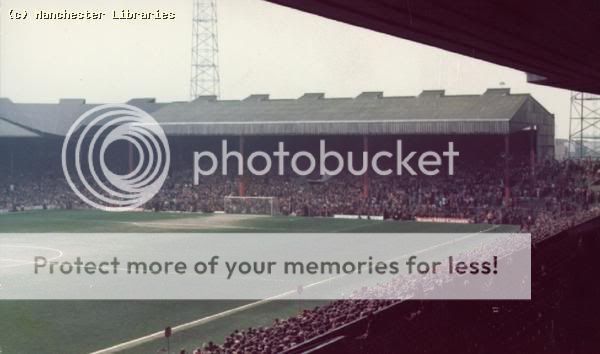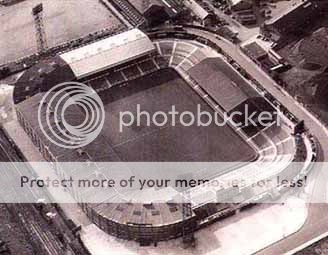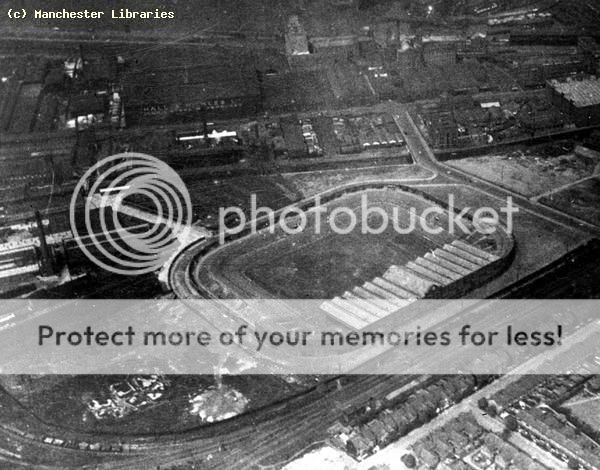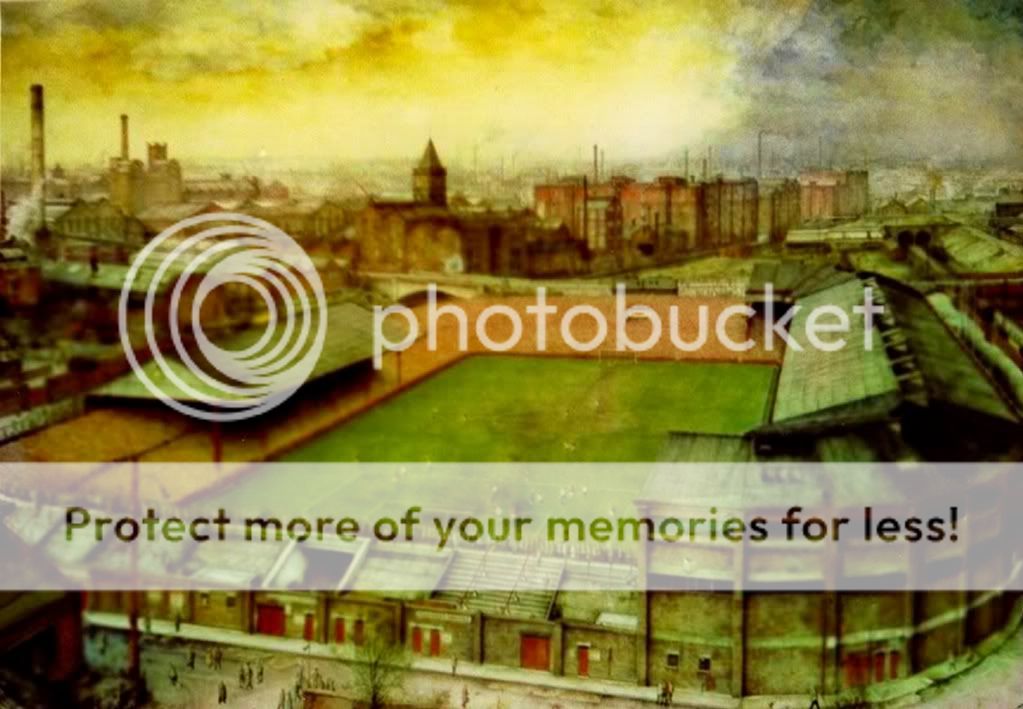The Beginning
As Newton Heath, United played at both North Road and Bank Street but as developments took place around the club, so did a stadium change. The name was changed to what we all know them by today, Manchester United and a plot of land was bought for what at the time was a very expensive at £60,000, and it was here that the home of the club would be constructed. In 1909, the build was complete and the end product was a stadium, terraced on 3 sides with a main stand, seated and under cover, which was the South stand and still to this day, remains the main stand. Designed by Archibald Leitch, a man also responsible for works at Ibrox, Hampden Park and White Hart Lane, had put forward plans for the stadium to be capable of holding a capacity of 100,000 although due to expenses the capacity had to be cut back to 60,000 which could stretch to 80,000 if need be. It was in this stadium where the highest ever recorded attendance at Old Trafford was taken and it came in a meeting between Wolverhampton Wanderers and Grimsby Town in an FA Cup semi-final, meaning that Manchester United don’t officially hold the highest attendance for within their own homeground. Wolves and Grimsby attracted a total of 76,962 spectators in March 1939 while the biggest number recorded at a United game is just short at 76,098 against Blackburn Rovers in March 2007. 1934 saw the replacement of the roofing over the South stand along with the adding of cover to the two South corners and partial covering of the North stand. The stadium was progressing well and more key developments were on the horizon but unfortunately
The Destruction
In March 1941, the stadium which had so much time and effort put into, was ruined during the Second World War as German planes, who were dropping bombs on Manchester, intending to hit the dock lands close to Old Trafford but ended up hitting a special part of Manchester. The stadium was in complete ruins almost most notably the main South stand which took the brunt of the damage. The tunnel however stood tall and proud which amazed everybody involved. United were given money to clear up the mess and rebuild the stadium but because the area was under construction, it meant that Manchester United wouldn’t be able to play a game in their real home for almost 10 years. During this time, the club was relocated to cross-town rivals Manchester City at Maine Road. As work went on at Old Trafford, they constructed the stadium almost to the exact details of the previous stadium.
The Rebuild
Shortly after, in the 1950’s, roofing was added to Stretford End, and in the modern cantilever roofing was added to the North stand and the East stand. This was a huge development in the construction history of Manchester United and was the fuel need to propel further developments to the home of Manchester United. At the time, plans were afoot to have every stand in Old Trafford set to cantilever style roofing, as roof-posts which were constructed to keep the roof standing obstructed fans views of the game. Some grounds nowadays still have this style of roofing, some due to financial limitations or planning permission whilst others prefer the old style English look. United were in full support of the new idea by then club owners, the Edwards. Before this took place, the Stretford End was a half seated, half terraced stand but due to the Hillsborough disaster, it was stated the top clubs in England had to have all-seated stadiums. This wasn’t of much concern to the United backroom as they already had plans to do away with it but at the time, fans were disappointed by the news as the Stretford End, the most famous United stand would cease to allow standing. The Stretford once had its noise recorded to that louder then a jumbo jet taking off. The last ever game to be played in front of the team was a match against Tottenham Hotspur in which United emerged victorious on a 3-1 score line. The terrace was demolished. The Stretford End was the final stand in Old Trafford to have its makeover of cantilever roofing and in 1994, Old Trafford became the first ever stadium to have a stadium with all stands erected to cantilever styling. However, due to the removal of standing in the Stretford End, United suffered a huge decrease in crowd attendances as the capacity fell from around 58,000, to 44,000, and this size was simply not big enough to cater for the thousands of loyal supporters.
United were to break another record when they announced that they would be renovating the already biggest North Stand into a mega, 3 tiered stand holding up to 28,000 spectators to view the team in red and this was to be the biggest style of stand in Europe and still is today. It has proved to be a £19M well spent on the United side. The stand is now a feature of English football and also houses the stadiums historic museum where one can learn about the United history which has built up since the beginning of the club.
The Present Day Old Trafford
After going through so many ordeals a magnificent stadium stands tall on Sir Matt Busby Way. The main stand, the South stand, is the smallest stand in the stadium all due to the fact that a rail line runs directly behind it and housing just behind that. Astronomical figures were reported recently on the figure United would have to dish out in order to build over the rail line and build on the land behind that. The current stand holds the TV cameras and the official Manchester United TV station, MUTV studios. The old tunnel is also located here in between the two managerial areas but since 1993, the club now use a tunnel in the corner of the South and West stands and the teams emerge from here. The old tunnel, recently renamed the Munich tunnel remains and is a stopping point on the official club tour. The stand is also the lowest in the stadium, set at a smaller angle meaning it stretches further back. An interesting fact of Old Trafford is that all the way around the ground, the seats in the first four rows are in fact below the street level around the stadium.
In further developments, the club decided that even further expansion was in need to keep up with the growing demand on one of the worlds biggest football teams. What this entailed was that an extra tier was to be added to the East stand also known as the well known K-Stand where hard-core United fans congregate although some have moved to the opposite Stretford End which was the other stand which was in line for a makeover with a second tier. The East stand had its second tier opened for operation in January of 2000 which boosted the stadium capacity to just over 61,000. The East stand is a very iconic stand at Old Trafford and it is here where the clubs Megastore where unimaginable turnover is made every single day as people of all ages from all over the world purchase goods from the latest jersey to bottle openers, is based. You can also access the club reception at the front of the stand. Standing proud and standing tall over the Megastore is the man who made Manchester United what they are and is the man who is responsible for the Busby Babes and the nickname of the Red Devils and it is of course, that statue of Sir Matt ‘Mattha’ Busby.
Across the forecourt also stands a trio of United greats, unveiled in 2008, which shows Best, Law and Charlton facing Sir Matt standing over them. The Munich clock which shows the time and date of the Munich Air Disaster along with the Munich Plaque which shows the names of those who passed away due to events in Munich. The new Millennium saw the introduction of a second tier added to the Stretford End which is now the place where many United fans look for tickets as it is here that the hard core fans who sing rain or shine are based. United are renowned for shooting towards the “Stretty” and 9 times out of 10, you will notice that they play towards the end in the second half of games. At the front of the second tier, banners are hung by supporters group, Stretfordend.co.uk. The banners range from taunting nearest rivals, Manchester City with the well-known counter” which shows the amount of years that City have gone without marking a major trophy with their name, to celebrating players that have won over the hearts of United fans, with one such example the 20LEGEND banner acknowledging Ole Gunnar Solskjaers time at Manchester United.
Old Trafford played host to FA Cup semi-finals as Wembley was undergoing a facelift along with hosting the 2003 Champions League final between Italian giants, AC Milan and Juventus. (AC Milan won on penalties) The stadium is the only stadia in England that has been given the UEFA 5 star rating, making it a historic venue for England. England’s national team themselves played their home games at the ground as Wembley was closed.
2005 saw the construction of the two quadrants in the North East/West corners enlarging the capacity to a whopping 76,000+, and this is how Old Trafford currently stands today for all to see.
What The Future May Hold
Many people are angling to see Old Trafford complete by adding two more quadrants in the two remaining corners along with seeing the South stand matched to the opposite North stand. This however would be the most expensive expansion should the club decide to go through with it as to carry out the work, the railway line would have to be built over and a large plot of land, currently containing houses, be uprooted for the stand. If such a build was to go through,the stadium would dwarf the country’s national stadium with a mega 96,000 capacity. Many believe that the club want to do this and have been considering it for a while now, although up until now, the club have made no announcements. Hopefully we’ll be looking at a 96,000 all-seater stadium in a few years to come.
OLD TRAFFORD, THEATRE OF DREAMS
borrowed from another website



























































